Before venturing into the mystical realm of Bhutan, a land steeped in cultural richness and Himalayan heritage, it's essential to grasp what makes this kingdom so captivating. Bhutan offers a retreat from the ordinary, where preserving culture, spirituality, and natural beauty is paramount. A journey here is not just a trip; it's an embrace of an ancient way of life where every aspect, from architecture to agriculture, is infused with mindfulness and respect for the environment.
Your journey through Bhutan will reveal a rich tapestry of culture, spirituality, and stunning natural landscapes. Spanning typically over a week or more, your itinerary should include the verdant valleys, majestic dzongs, and charming villages that epitomize Bhutan's harmonious blend of tradition and contemplative progress.
Highlights of your trip are likely to include the intricate architecture of Punakha Dzong, the serene Taktsang Monastery in Paro, clinging to a cliffside, and the exuberant Tshechu festivals, where spiritual and cultural lives intermingle in vivid dance and music.
Before entering the Land of the Thunder Dragon, familiarize yourself with Bhutan's distinctive tourism policy, which includes a daily sustainable development fee. Additionally, there are 50+ important tips and frequently asked questions (FAQs) regarding travel in Bhutan, such as the best time to visit, visa procedures, attractions, costs, and transportation options to Bhutan, all designed to help you successfully navigate your journey in Bhutan.
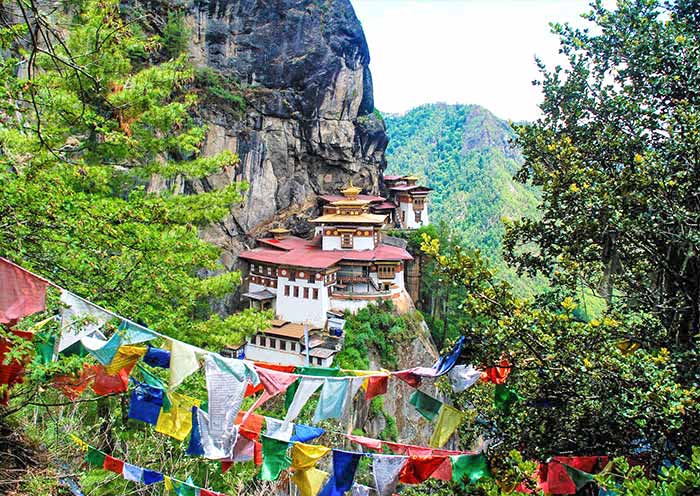
"Excellent Tour, best experience"
"A unique experience despite a difficult context thanks
to an experience team of organisers"
1. Do I need to get a visa to visit Bhutan?+
For most nationalities except for Indian, Bangladeshi, Maldivian nationals, a visa is required to enter Bhutan. This visa can be obtained through a licensed Bhutanese tour operator, such as Asia Odyssey Travel. Additionally, you will need to pay the visa fee of $40 and the Sustainable Development Fee (SDF) of $100 per night, which is effective from September 1, 2023, until August 31, 2027.
2. When is the best time to visit Bhutan?+
The best time to visit Bhutan depends on your personal preferences and the specific experiences you are seeking.
Typically, the popular tourist seasons are spring (March to May) and autumn (September to November), when the weather is generally pleasant and the skies are clear. These seasons offer great opportunities for outdoor activities, trekking, and witnessing Bhutan's vibrant festivals.
The Paro Tshechu is held in Paro in March or April. The Thimphu Tshechu is help in capital Thimphu in September or October. The Punakha Tshechu is celebrated in February or March in the Punakha Dzong.
Winter (December to February) can be cold, especially in higher elevations, but it offers stunning views of snow-capped mountains. The monsoon season (June to August) brings heavy rainfall, but it can still be a good time to visit for lower tourist numbers and lush green landscapes.
3. How to plan a Bhutan Tour?+
It typically needs 6 to 10 days. For a 6-day tour, it is highly recommended to visit Paro - Thimphu - Punakha, and return to Paro. Begin in Western Bhutan with around 2 days in Paro, followed by Thimphu (1-2 days) and Punakha (1-2 days). Or, extending your trip by 1-2 days will allow you to explore the less-visited Haa or Phobjikha valleys. To delve deeper into Bhutan's cultural heritage, head to central Bhutan for 1-2 days to visit Trongsa and Bumthang. This itinerary ensures a well-rounded experience, showcasing the best of Bhutan's natural beauty and historic sites.
4. What is Bhutan Famous for?+
Bhutan is renowned for its unique approach to national happiness, stunning Himalayan landscapes, rich Buddhist culture, and well-preserved environmental beauty. It's famous for the iconic Tiger's Nest Monastery, traditional architecture like dzongs, vibrant festivals like Tshechus, and its philosophy of Gross National Happiness. Bhutan is also recognized for its commitment to environmental conservation, being one of the few carbon-negative countries in the world.
5. What are the must-visit places in Bhutan?+
| No. | Place | Description |
|---|---|---|
| 1 | Tiger’s Nest Monastery (Paro Taktsang) | A famed cliffside monastery offering spiritual experiences and breathtaking views. |
| 2 | Punakha Dzong | Known for its stunning architecture and historical importance, it's located at the confluence of two rivers. |
| 3 | Thimphu | The capital city blending traditional and modern elements, with attractions like Tashichho Dzong and the Buddha Dordenma statue. |
| 4 | Phobjikha Valley | A scenic glacial valley, famous as the winter home of black-necked cranes and for its natural beauty. |
| 5 | Bumthang Valley | The spiritual heartland of Bhutan, home to some of the oldest temples and monasteries. |
| 6 | Rinpung Dzong | An important religious and administrative center in Paro, showcasing Bhutanese architecture. |
| 7 | Chele La Pass | One of Bhutan's highest motorable passes, offering panoramic views of mountains and valleys. |
| 8 | Haa Valley | A less-traveled valley noted for its pristine nature and insight into the traditional Bhutanese lifestyle. |
| 9 | Trongsa Dzong | A centrally located dzong with significant historical value and spectacular views. |
| 10 | Dochula Pass | Known for its 108 memorial chortens, stunning Himalayan views, and the Druk Wangyal Lhakhang temple. |
Find more information View 10 Best Places to Visit in Bhutan>>
6. How to get to Bhutan?+
Bhutan can be reached by air through Paro International Airport, which is Bhutan's only international airport. Flights to Bhutan are available from major cities such as Delhi, Kolkata, Bagdogra, Gaya, Guwahati in India, Dhaka in Bangladesh, Bangkok in Thailand, Kathmandu in Nepal, and Changi in Singapore.
7. Are there any restrictions on the number of tourists visiting Bhutan?+
Bhutan follows a “High Value, Low Impact” tourism policy but doesn't limit the number of tourists.
8. Is it safe to travel alone in Bhutan?+
Bhutan is generally considered a safe country for solo travelers. The crime rate is low, and the locals are known for their hospitality and friendliness. However, as with any destination, it's important to take common-sense precautions, such as being aware of your surroundings, keeping your belongings secure, and following any safety advice provided by your tour operator or accommodation.
9. What are some must-visit destinations and attractions for solo travelers in Bhutan?+
Bhutan offers numerous must-visit destinations and attractions for solo travelers. Some popular ones include the iconic Tiger's Nest (Paro Taktsang) monastery, Punakha Dzong, the capital city of Thimphu with its cultural sites and markets, the serene valleys of Paro and Haa, and the beautiful Bumthang region known for its monasteries and temples.
10. What are some recommended activities or experiences for solo travelers in Bhutan?+
Bhutan offers a range of activities and experiences for solo travelers. Some popular options include hiking toTiger's Nest monastery, exploring traditional Bhutanese villages, attending local festivals, visiting ancient dzongs(fortresses), participating in meditation or yoga retreats, and enjoying the breathtaking landscapes during nature walks or treks.
11. Are there any specific precautions I should take as a solo female traveler in Bhutan?+
Bhutan is generally considered safe for solo female travelers. However, it is advisable to take standard precautions such as avoiding isolated areas at night, dressing modestly, and being aware of your surroundings. It is also recommended to inform your accommodation or tour operator about your travel plans and to follow their recommendations for a safe and enjoyable trip.
12. How can I make the most of my solo trip to Bhutan and connect with locals and fellow travelers?+
To make the most of your solo trip to Bhutan and connect with locals and fellow travelers, consider engaging in cultural activities such as attending local festivals or visiting local markets. Interacting with locals, trying local cuisine, and participating in community-based tourism initiatives can provide opportunities to learn more about Bhutanese culture and make meaningful connections.
13. Can I engage in meditation or spiritual retreats as a solo traveler in Bhutan?+
Yes, Bhutan is known for its serene environment and rich spiritual heritage, making it a great destination for meditation or spiritual retreats. There are monasteries, meditation centers, and retreat facilities where you can engage in solitary retreats or join group programs led by experienced teachers. It is recommended to inquire with your tour operator or local contacts for suitable options based on your interests and preferences.
1. What are the popular hiking and trekking routes in Bhutan?+
Popular routes include the Druk Path Trek, a 5 to 6 days trek from Paro to Thimphu, offering stunning mountain views. The Jomolhari Trek is a challenging 7 to 8 days trek to the base of Mount Jomolhari. The Snowman Trek is a demanding 25-day trek that traverses high mountain passes and remote valleys. The Bumthang Cultural Trek is a shorter 3-day trek that combines cultural experiences with scenic landscapes.
2. How difficult are the hiking and trekking trails in Bhutan?+
The difficulty level varies. The Druk Path Trek and Bumthang Cultural Trek are relatively moderate and suitable for beginners. The Jomolhari Trek and Snowman Trek are more challenging, involving steep ascents, high-altitude passes, and longer days of hiking. Prior trekking experience and good physical fitness are recommended for these routes.
3. What is the best time of year to go hiking or trekking in Bhutan?+
The best time is during the spring (March to May) and autumn (September to November) seasons. Spring offers pleasant weather, blooming wildflowers, and rhododendron forests. Autumn provides clear skies, mild temperatures, and vibrant foliage.
4. What permits or permissions are required for hiking and trekking in Bhutan?+
To trek in Bhutan, you need a special trekking permit, which is obtained through a licensed Bhutanese tour operator. We will handle the necessary paperwork and logistics for the trekking permit.
5. Are there any age or fitness restrictions for hiking and trekking in Bhutan?+
While there are no strict age restrictions, a reasonable level of fitness is recommended. Trekking in Bhutan involves walking for several hours each day, often at high altitudes. It is advisable to consult with a healthcare professional before undertaking a trek, especially for individuals with pre-existing medical conditions.
6. Are there camping facilities available along the hiking and trekking trails in Bhutan?+
Yes, camping facilities are available along most trekking routes in Bhutan. We will arrange the necessary camping equipment, including tents, sleeping mats, and a support team to set up and manage the campsites.
1. What makes a Bhutan tour "luxury"?+
High-end accommodation in boutique hotels, lodges, or private homestays with stunning views and personalized service.
Private guides and vehicles for intimate experiences and flexible Bhutan itineraries.
Exclusive cultural experiences like private audiences with monks, local gatherings, or special festival access.
Gourmet dining featuring local delicacies and international cuisine with top-notch service. Focus on mindfulness and wellness through spa treatments, yoga sessions, and scenic hikes. Access to remote areas and hidden gems not included in standard Bhutan tours.
2. Are there different types of luxury Bhutan tours?+
Cultural Immersions: Focus on ancient monasteries, historical sites, and authentic experiences with local communities.
Adventure Activities: Trek through breathtaking landscapes, go white-water rafting, or cycle through charming Bhutan villages.
Festival Extravaganza: Witness vibrant Bhutan Tshechus, Cham dances, and unique local celebrations.
Wellness Retreats: Combine sightseeing with spa treatments, yoga, meditation, and spiritual practices.
Tailor-made Journeys: Design your own Bhutan itinerary based on your interests and preferences.
3. What is the best time of year for a luxury Bhutan tour?+
4. What are some sustainable practices I can follow during my luxury Bhutan tour?+
5. What are some memorable experiences unique to luxury Bhutan tours?+
Enjoying sunset champagne picnics overlooking breathtaking mountain valleys. Experiencing a private blessing ceremony in a hidden monastery.
Taking a helicopter tour over the Himalayas and landing on a glacier for a picnic lunch. Participating in a traditional archery competition with local villagers.
Attending a private cooking class and learning to prepare Bhutanese delicacies.
Remember, these are just a starting point. When choosing a luxury Bhutan tour, always prioritize responsible tourism practices, ethical interactions with locals, and experiences that leave a positive impact on the country and its people.
6. What are the luxury hotels/5 star accommodations available in Bhutan?+
Bhutan offers a range of luxury accommodations, including luxury hotels, boutique resorts, unique lodges, and traditional luxury Bhutanese farmhouses known as "luxury rural retreats."
There are over twenty-one 5-star hotels in Bhutan, which encompass approximately 10 brands of world-famous 5-star hotels:
1.Thimphu Luxury Hotel, Bhutan 5 Star Hotels: Amankora Thimphu, Six Senses Thimphu, DusitD2 Yarkay Thimphu, Le Meridien Thimphu, Pemako Thimphu (Taj Tashi)
2.Paro Luxury Hotel, Bhutan 5 Star Hotels: Amankora Paro, Six Senses Paro, Bhutan Spirit Sanctuary, COMO Uma Paro, Zhiwa Ling Heritage Paro, Le Meridien Paro Riverfront
3.Punakha Luxury Hotel, Bhutan 5 Star Hotels: Amankora Punakha, Six Senses Punakha, Pemako Punhaka, &Beyond Punakha River Lodge, COMO Uma Punakha
4.Gangtey Luxury Hotel, Bhutan 5 Star Hotels: Amankora Gangtey, Six Senses Gangtey, Gangtey Lodge
5.Bumthang Luxury Hotel, Bhutan 5 Star Hotels: Amankora Bumthang, Six Senses Bumthang
7. What are the luxury transportation options in Bhutan?+
8. Can luxury tours in Bhutan include exclusive cultural experiences?+
9. Are luxury tours suitable for families or only for couples?+
10. Are luxury tours in Bhutan suitable for solo travelers?+
11. What are the must-visit luxury destinations in Bhutan?+
12. Are luxury tours in Bhutan suitable for outdoor adventure enthusiasts?+
1. Bhutan Festivals Dates in 2024+
Festival dates are tentative and may change. It is highly recommended to confirm with the your travel consultant or agency before booking or making any arrangement.
| Festival Name | Festival Location | Festival Date (2024) |
|---|---|---|
| Lhamoi Dromche | Trongsa | Feb 15-17 |
| Punakha Drupchen | Punakha | Feb 16-18 |
| Punakha Tshechu | Punakha | Feb 19-21 |
| Tharpaling Thongdrol | Chumi,Bumthang | Feb 24 |
| Tangsibi Mani | Ura,Bumthang | Feb 24-26 |
| Bhutan International Marathon | Annual Event Organised | Mar 5 |
| Gomphukora | Trashigang | Mar 17-19 |
| Talo Tshechu | Talo,Punakha | Mar 17-19 |
| Gasa Tshechu | Gasa | Mar 17-19 |
| Zhemgang Tshechu | Zhemgang | Mar 17-19 |
| Paro Tshechu | Paro | Mar 21-25 |
| Chhorten Kora | Trashiyangtse | Mar 25 & April 8 |
| Rhododendron festival | Lampelri Botanical Garden,Dochula | April 19-21 |
| Domkhar Tshechu | Chumi,Bumthang | April 18-20 |
| Ura Yakchoe | Ura,Bumthang | April 20-24 |
| Nimalung Tshechu | Chumi,Bumthang | June 14-16 |
| Kurjey Tshechu | Choekor,Bumthang | June 16 |
| Haa Summer Festival | Haa | July 14-15 |
| Mushroom festival | Genekha, Thimphu | Aug 15-16 |
| Masutaki Mushroom festival | Ura,Bumthang | Aug 23-24 |
| Tour of the Dragon-Bicycle Race | Bumthang-Thimphu | Sept 5 |
| Thimphu Drupchen | Thimphu | Sep 8 |
| Paro Dromche | Paro | Sep 10 |
| Wangdue Tshechu | Wangduephodrang | Sep 11-13 |
| Thimphu Tshechu | Thimphu | Sep 12-14 |
| Tamshing Phala Choepa | Tamshing,Bumthang | Sep 13-15 |
| Gangtey Tshechu | Gangtey, Phobjikha Valley | Sep 16-18 |
| Thangbi Mani | Choekor,Bumthang | Sep 17-19 |
| Jhomolhari Mountain Festival | Dangochang (Jhomolhari Base Camp) | Oct 14-15 |
| Royal Highland festival | Elevation over 4000 meters | Oct 23-24 |
| Chukha Tshechu | Chukha | Oct 10-12 |
| Jakar Tshechu | Choekor,Bumthang | Oct 10-12 |
| Jambhay Lhakhang Drup | Choekor,Bumthang | Oct 17-21 |
| Prakhar Duchhoed | Chumi,Bumthang | Oct 18-20 |
| Dechenphu Tshechu | Thimphu | Nov 3 |
| Black Necked Crane festival | Phobjikha Valley | Nov 11 |
| Goenpi Dromche | Trongsa | Nov 6-8 |
| Mongar Tshechu | Mongar | Nov 9-11 |
| Trashigang Tshechu | Trashigang | Nov 9-11 |
| Jambhay Lhakhang Singye Cham | Bumthang | Nov 15 |
| Pemagatshel Tshechu | Pema Gatshel | Nov 9-11 |
| Nalakhar Tshechu | Bumthang | Nov 15-17 |
| Druk Wangyel Tshechu | Dochula | Dec 13 |
| Trongsa Tshechu | Trongsa | Dec 8-10 |
| Lhuentse Tshechu | Lhuentse | Dec 8-10 |
2. What are the major Bhutan festivals included in the tours?+
Our Bhutan Festivals Tours typically include the most celebrated festivals like Thimphu Tshechu, Paro Tshechu, and Punakha Tshechu & Punakha Drupchen, among others.
3. Are photography and video allowed during the festivals?+
Photography is generally allowed, but it's important to be respectful and mindful of local customs. Always ask for permission before taking close-up photos of individuals, monks, or sacred objects. Don’t photograph a member of the royal family, if you happen to be at a festival or gathering where they are present.
4. What should I wear to the festival?+
Dress respectfully in modest clothing that covers your shoulders and knees. Consider wearing a kira (for women) or a gho (for men) to blend in and show respect. You can rent or purchase these garments in Bhutan. Avoid wearing revealing or inappropriate clothing.
5. Is there any taboos during the festival?+
Consuming alcohol or smoking in the vicinity of the festival is typically taboo, as these actions can be seen as defiling a sacred space.
6. Can I dance together with the masked dancer?+
Traditionally, everybody, including visitors, enthusiastically takes part in the final dance (Tashi Lebey), which concludes all festivities or dance performances.
7. What's the weather like in Bhutan during winter?+
The weather in Bhutan during winter (December to February) varies by region. Higher elevations surpassing 3,000 meters (9,843 ft) experience frequent and heavier snowfall in Winter Bhutan, while lower valleys may witness occasional flurries. The average temperatures, you can expect colder days (4-13°C, 40-55°F) and frosty nights (-7 to 2°C, 20-35°F)
8. Is Bhutan good for trekking during winter?+
While high-altitude treks are not recommended, several lower-altitude trails remain accessible and offer beautiful scenery, like the Punakha Winter Trek and the Gangtey Nature Trail. As it's the off-season, you'll encounter far fewer trekkers on the trails, allowing you to enjoy a more peaceful and intimate experience. You might witness snow-dusted rhododendron forests and frozen waterfalls, creating a magical winter wonderland atmosphere.
9. Are the prices for Bhutan tours higher or lower in winter?+
Since winter is the low season, travel costs, including accommodation and possibly airfare, may be lower compared to the peak tourist seasons.
10. What wildlife can I see in Bhutan during winter?+
Winter is the best time to see black-necked cranes in places like Phobjikha Valley. The diverse Bhutanese ecosystem can also present opportunities to spot other wildlife adapted to the colder climate.
11. Are there any festivals in Bhutan during winter?+
Yes, winter is a time for numerous festivals in Bhutan. Punakha Drubchen & Punakha Tshechu are held during February at the Punakha Dzong. The Dochula Tsechu, celebrated annually in December at the renowned Dochula Pass, commemorates the Bhutanese warriors' victory over the Tibetan invaders. Eastern Bhutan hosts the Trashigang Tsechu at the Trashigang Monastery, among other events. Besides these, Bumthang hosts several smaller festivals worth attending.
12. What should I pack for a winter tour in Bhutan?+
1. Are there age restrictions for children traveling to Bhutan?+
There are no specific age restrictions for children traveling to Bhutan. However, it's important to consider the physical demands of certain activities or treks and ensure that they are suitable for your child's age and capabilities.
2. What are some family-friendly activities and attractions in Bhutan?+
Bhutan offers several family-friendly activities and attractions. You can visit iconic monasteries such as Tiger's Nest (Paro Taktsang) or Punakha Dzong, explore the beautiful valleys of Paro and Thimphu, enjoy picnics near scenic rivers, go on nature hikes, or participate in traditional Bhutanese art and craft workshops.
3. Can we customize our itinerary to include child-friendly activities and attractions?+
Yes, you can customize your itinerary to include child-friendly activities and attractions. Inform us about your preferences and the ages of your children, and they can tailor the itinerary accordingly, suggesting suitable activities and attractions that will cater to your family's needs.
4. Are there accommodations that cater to families with children?+
Yes, there are accommodations in Bhutan that cater to families with children. Many hotels and resorts offer family rooms or interconnecting rooms, providing convenience and comfort for families. It is advisable to inform your tour operator or travel agent in advance to arrange suitable accommodations.
5. Are there special dietary considerations for children in Bhutan?+
Bhutanese cuisine primarily consists of rice, vegetables, and meat dishes. However, many hotels and restaurants in Bhutan offer a variety of international cuisines, including options suitable for children, such as pasta, sandwiches, and soups. Inform us about any specific dietary requirements, and they can make necessary arrangements.
6. What are the transportation options for families traveling in Bhutan?+
Transportation options in Bhutan typically include private vehicles provided by us. These vehicles can accommodate families comfortably, and the drivers are experienced in navigating the local roads. It is advisable to inform your tour operator about the number of family members and any specific requirements you may have regarding transportation.
7. Why is Bhutan a popular destination for honeymooners?+
Bhutan's pristine natural beauty, serene ambiance, and rich cultural heritage make it an ideal destination for honeymooners seeking a unique and romantic experience. The country's emphasis on happiness, peacefulness, and sustainable tourism provides a perfect backdrop for a memorable honeymoon.
8. What are the best romantic places or activities to experience in Bhutan?+
Bhutan offers several romantic places and activities for honeymooners. Some popular options include visiting the Tiger's Nest Monastery (Paro Taktsang), exploring the Punakha Valley with its beautiful landscapes and Punakha Dzong, enjoying a leisurely walk in the picturesque Haa Valley, and experiencing a romantic riverside picnic in one of Bhutan's serene valleys.
9. Are there any honeymoon-specific tour packages or itineraries available in Bhutan?+
Yes, we offer honeymoon-specific tour packages or can customize itineraries to cater to honeymooners. These packages often include romantic accommodations, special experiences, private transportation, and activities designed for couples to create cherished memories.
10. What are the ideal durations for a honeymoon tour in Bhutan?+
The ideal duration for a honeymoon tour in Bhutan can vary depending on your preferences and the activities you wish to include. However, a duration of 7 to 10 days is often recommended to explore the major attractions, experience the local culture, and have ample time for relaxation and romance.
11. What are the popular honeymoon accommodations or resorts in Bhutan?+
Bhutan offers a range of romantic accommodations and resorts that cater to honeymooners. Some popular options include luxury boutique hotels, traditional Bhutanese-style resorts with stunning views, and secluded mountain lodges that provide privacy and a romantic atmosphere.
12. Are there any special arrangements or amenities for honeymooners in Bhutan?+
Yes, many accommodations in Bhutan offer special arrangements and amenities for honeymooners. These may include romantic room decorations, welcome gifts, candlelit dinners, spa treatments for couples, and personalized experiences to enhance the romantic atmosphere.
13. Can I customize my honeymoon tour itinerary in Bhutan?+
Absolutely! We allow customization of honeymoon tour itineraries based on your preferences. You can work with us to include specific destinations, activities, and romantic experiences that align with your vision of an unforgettable honeymoon.
1. Are there any specific birding/wildlife events or festivals in Bhutan?+
Bhutan hosts various birding/wildlife events and festivals throughout the year. One notable event is the Black-necked Crane Festival held in the Phobjikha Valley, celebrating the arrival of these majestic birds. Other festivals and events may focus on different species or wildlife conservation themes. It is advisable to check the local calendar of events for any upcoming birding/wildlife-related festivals during your visit.
2. What are the popular bird species and wildlife found in Bhutan?+
Bhutan is home to a rich variety of bird species and wildlife. Some popular bird species include the Himalayan Monal, Satyr Tragopan, Ward's Trogon, Beautiful Nuthatch, and Bhutan Laughingthrush. Wildlife enthusiasts can spot animals such as the Royal Bengal Tiger, Snow Leopard, Red Panda, Takin (the national animal of Bhutan), and various species of deer, monkeys, and langurs.
3. Are there specialized birding/wildlife tour guides or experts available in Bhutan?+
Yes, Bhutan has specialized birding/wildlife tour guides and experts who are knowledgeable about the local avifauna and wildlife. These guides are experienced in identifying bird species, locating wildlife habitats, and providing insightful information about Bhutan's natural environment.
4. What are the key birding/wildlife hotspots or national parks in Bhutan?+
Bhutan has several key birding/wildlife hotspots and national parks. Some popular places for birding include the Phobjikha Valley, Bumdeling Wildlife Sanctuary, Zhemgang, and Tingtibi. Important national parks for wildlife sightings include Jigme Dorji National Park, Royal Manas National Park, and Bumdeling Wildlife Sanctuary.
5. Can I combine birding/wildlife tours with cultural sightseeing in Bhutan?+
Absolutely! Bhutan is known for its unique blend of biodiversity and rich cultural heritage. Many birding/wildlife tours in Bhutan can be combined with cultural sightseeing, allowing you to explore the country's monasteries, dzongs (fortresses), and traditional way of life while enjoying its natural wonders.
6. Can I engage in meditation or spiritual retreats as a solo traveler in Bhutan?+
Yes, Bhutan is known for its serene environment and rich spiritual heritage, making it a great destination for meditation or spiritual retreats. There are monasteries, meditation centers, and retreat facilities where you can engage in solitary retreats or join group programs led by experienced teachers. It is recommended to inquire with your tour operator or local contacts for suitable options based on your interests and preferences.
7. What is the significance of Bhutan as a destination for spiritual and wellness tours?+
Bhutan is often regarded as a sacred and spiritually rich destination, known for its unique blend of Buddhism, mindfulness, and natural beauty. The country's commitment to Gross National Happiness and the preservation of its cultural heritage make it an ideal place for spiritual seekers and wellness enthusiasts.
8. What are the popular spiritual sites and monasteries to visit in Bhutan?+
Bhutan is home to numerous spiritual sites and monasteries. Some popular ones include Tiger's Nest Monastery (Paro Taktsang), Punakha Dzong, Kyichu Lhakhang, Chimi Lhakhang (the fertility temple), Gangtey Monastery, and Dochula Pass, which offers panoramic views and a collection of chortens (stupas).
9. Are there specialized guides or experts available for spiritual and wellness tours in Bhutan?+
Yes, Bhutan has specialized guides and experts who are well-versed in the country's spiritual traditions and practices. These guides can provide deep insights into Buddhism, meditation, mindfulness, and other aspects of Bhutan's spiritual heritage. They facilitate meaningful experiences and help visitors connect with the spiritual essence of Bhutan.
10. What are the key practices or activities offered during spiritual and wellness tours in Bhutan?+
Spiritual and wellness tours in Bhutan offer a range of practices and activities. These may include guided meditation sessions, visits to monasteries and temples, participation in prayer ceremonies, mindfulness walks in serene natural settings, yoga and wellness retreats, and opportunities for self-reflection and introspection.
11. Can I customize my spiritual and wellness tour itinerary in Bhutan?+
Yes, we offer customizable spiritual and wellness tour itineraries. You can work with them to design an itinerary that aligns with your specific spiritual interests, preferred duration, and desired activities. This allows you to focus on specific practices, visit particular monasteries, or incorporate additional wellness elements into your tour.
1. What are the must-see attractions in Punakha?+
Iconic Punakha Dzong: Explore the majestic Punakha Dzong, a fortress of exquisite Bhutanese architecture, set against the confluence of the Pho and Mo Chhu rivers.
Scenic Punakha Valley: Immerse yourself in the beauty of the fertile Punakha Valley, with its terraced fields and traditional villages, providing a snapshot of rural Bhutanese life.
Thrilling Suspension Bridge: Experience the thrill of crossing the Punakha Suspension Bridge, offering spectacular views of the valley and rivers below.
Unique Chimi Lhakhang: Also known as the Fertility Temple, this unique monastery is dedicated to Drukpa Kunley, "The Divine Madman," and is visited by childless couples seeking blessings.
Sangchen Dorji Lhuendrup Nunnery: A tranquil nunnery that offers stunning views of the valley and houses a large statue of Avalokiteshvara.
Spiritual Khamsum Yulley Namgyal Chorten: Hike to this beautiful temple and enjoy panoramic vistas while absorbing the spiritual tranquility of the surroundings.
Adventure Activities: For the thrill-seekers, engage in exhilarating white-water rafting on the Mo Chhu or Pho Chhu rivers or enjoy serene nature walks through the valley.
2. What kind of accommodation options are available in Punakha?+
Visitors can choose from a variety of options, including Bhutan hotels, resorts, lodges, and homestays.
3. How many days are recommended for a Punakha Tour?+
For a comprehensive Punakha tour, it is recommended to spend at least 2 days. This allows ample time to explore the main attractions as well as to engage in activities such as rafting or hiking.
4. What's the best time to visit Punakha, Bhutan?+
| Season | Months | Weather | Highlights |
|---|---|---|---|
| Spring | March - May | Pleasant, sunny skies | Hiking, trekking, rafting, sightseeing, rhododendrons bloom |
| Autumn | September - November | Pleasant, festivals | Punakha Drubchen festival, cultural immersion |
| Winter | December - February | Cooler, possible snowfall | Fewer crowds, lower prices |
5. Are there any festivals or events in Punakha, , Bhutan?+
Punakha Drubchen: This is one of the biggest and most spectacular festivals in Bhutan, held in February, at the majestic Punakha Dzong. It's a religious festival commemorating the victory of over Tibetan forces, featuring vibrant masked dances, traditional music, and colorful costumes.
Punakha Tshechu: This is a nationwide festival, held in February, celebrated in all districts of Bhutan, including Punakha Dzong. It's a celebration of Guru Rinpoche, who brought Buddhism to Bhutan. The festival features colorful parades, masked dances, and traditional archery competitions.
6. How do I get to Punakha, Bhutan?+
Most international visitors arrive at Paro International Airport in Bhutan and then travel to Thimphu, the capital city, which is about an hour's drive away. From there, they drive to Punakha, which takes about 2-3 hours. The journey includes crossing the picturesque Dochula Pass, offering breathtaking views of the Himalayan mountain range on clear days, before descending into the lush Punakha valley.
7. What are the must-see attractions in Wangdue Phodrang District?+
Wangdue Phodrang Dzong: Built in 1639, this strategically located fortress-monastery stands at the confluence of two rivers. It played a pivotal role in unifying Bhutan's western, central, and southern regions during the 17th century.
Rinchengang Village: This charming village is known for its exceptional traditional stonework and the panoramic views of Wangdue Phodrang Dzong.
Phobjikha Valley: Phobjikha Valley is a stunning glacial valley known for its natural beauty and the black-necked cranes that migrate here in winter. The valley also offers scenic hiking trails and opportunities for birdwatching.
Gangtey Nature Trail: This is an easy hike and is one of the most beautiful hikes. The Trail starts from (4km, 1.5-2 hours) from Gangtey Monastery to Khewang Lhakhang. You can see the beautiful view of the Gangtey / Phobjikha valley, marshy wetland and the rare black necked Cranes.
Gangtey Monastery: The only Nyingmapa school in the west of Black mountain and is surrounded by the Gangtey village and offer the panoramic views of the Phobjikha valley.
Black-Necked Crane Information Centre: This center provides information about the cranes' habitats, local culture, and natural history.
8. What's the best time to visit Phobjikha Valley, Bhutan?+
The best time to visit is during the black-necked crane migration season (late October to mid-February) if you want to see these rare birds. Spring (March to May) and autumn (September to early October) are also great for pleasant weather and natural beauty.
9. How do I get to Gangtey/Phobjikha Valley?+
Most travelers fly into Paro International Airport and then drive to Gangtey from Thimphu or Punakha. The road journey offers scenic views.
| Route | Distance (Approx.) | Drive Duration (Approx.) |
|---|---|---|
| Punakha to Gangtey | 60 to 80 kilometers | 2 to 3 hours |
| Thimphu to Gangtey | 140 to 160 kilometers | 4 to 5 hours |
10. What should I pack for a Gangtey/Phobjikha Valley tour?+
11. Can I see the black-necked cranes during my visit?+
You can see black-necked cranes in Gangtey/Phobjikha Valley during their winter migration season, particularly from late October to mid-February.
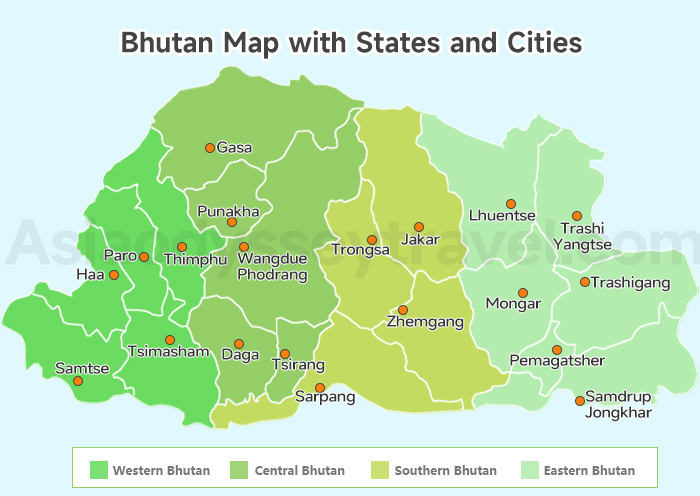
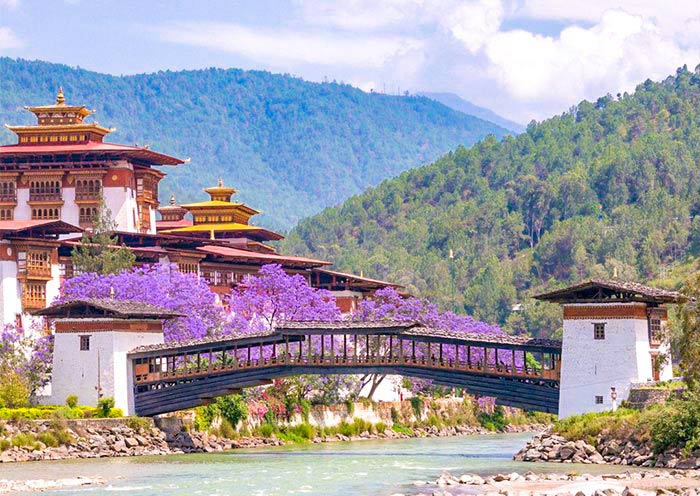
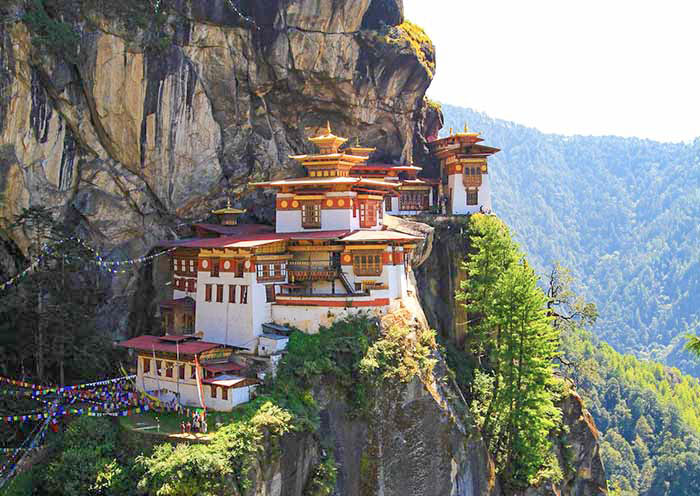
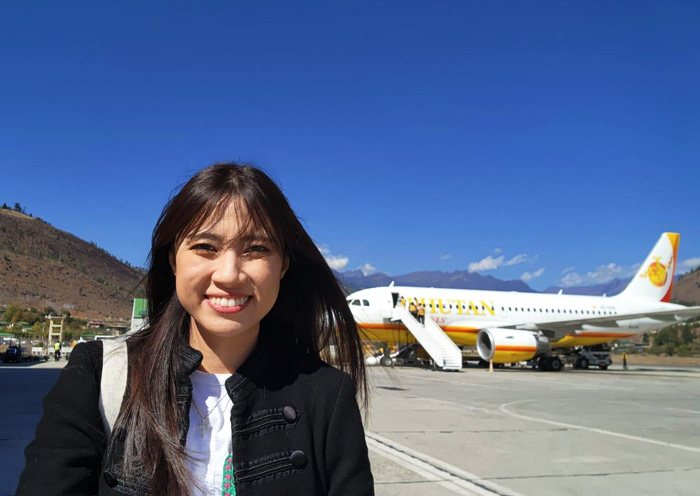
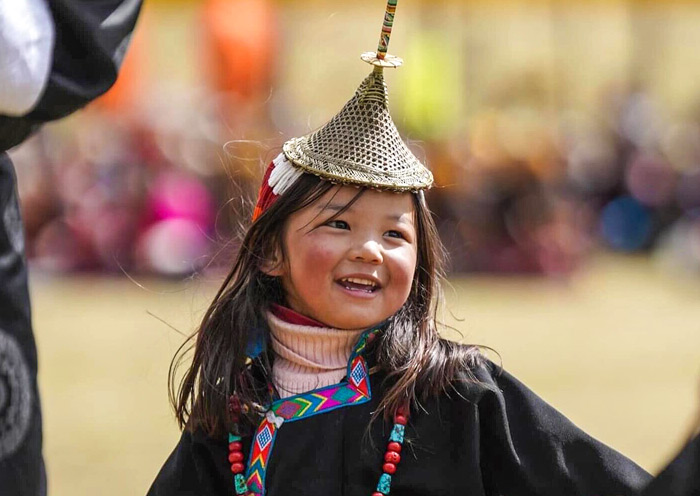
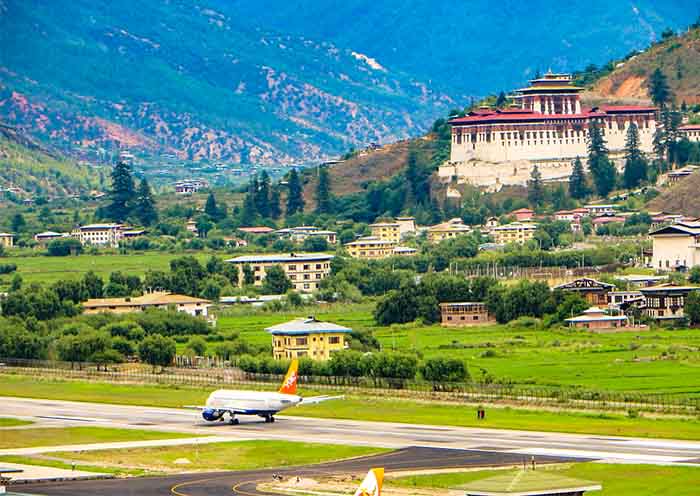
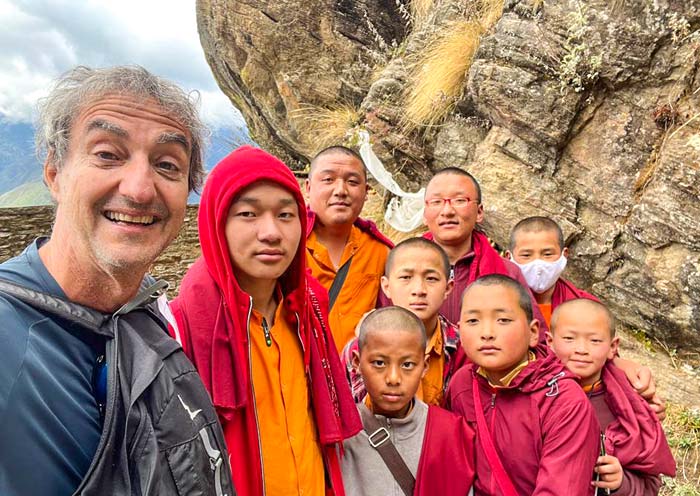
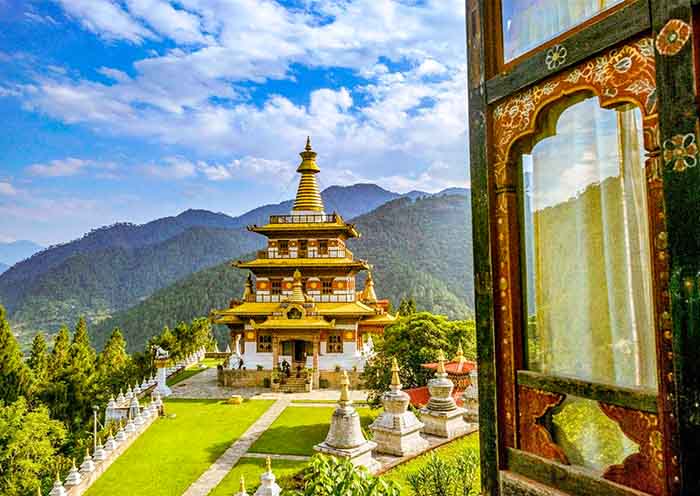
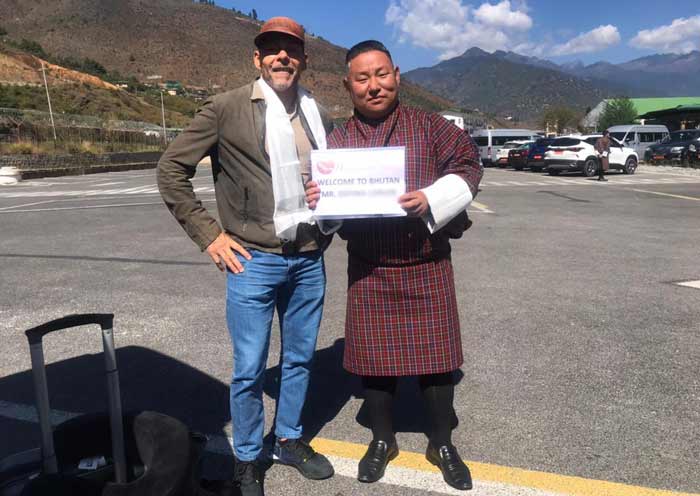
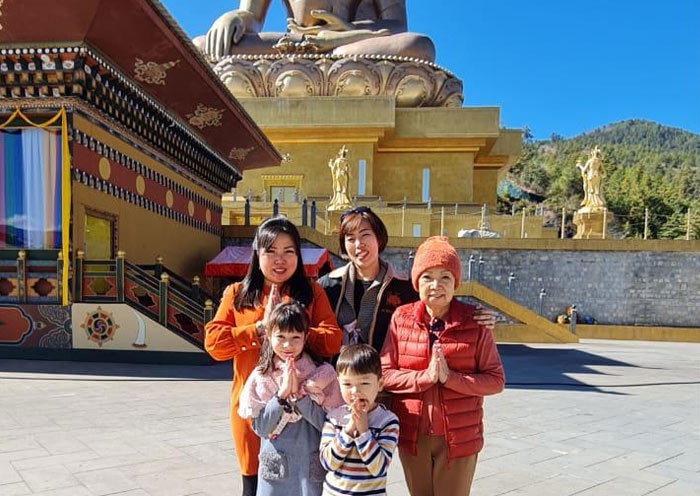
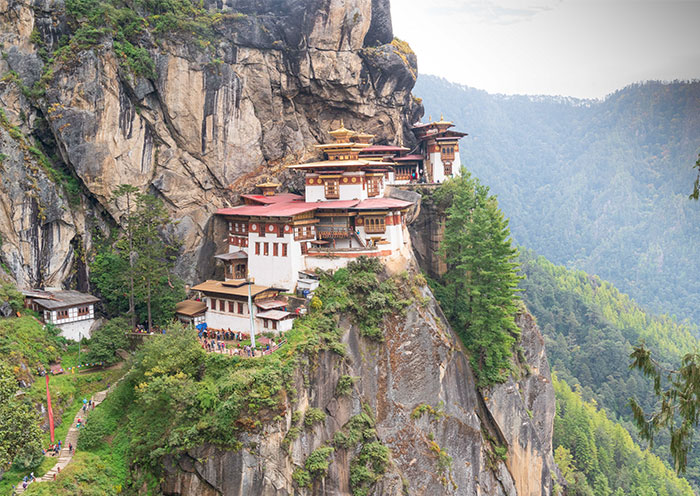
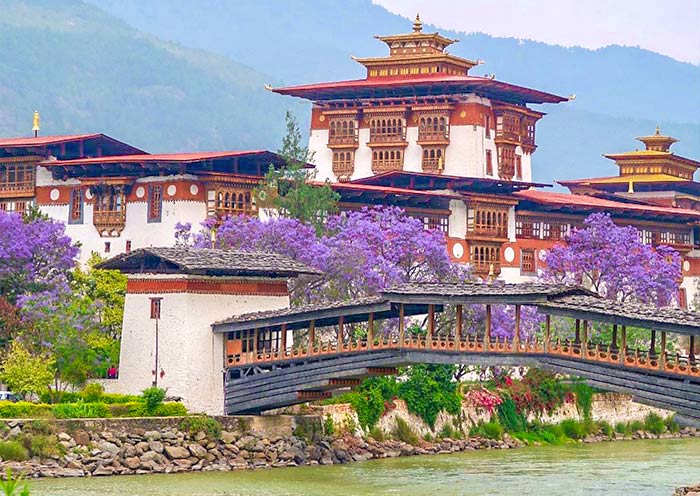
Create a tour based truly on your preferences, including all aspects of your travel in the destination